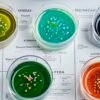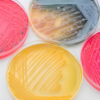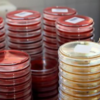
The European Pharmacopoeia (Ph. Eur.) culture media standards are the gold standard for pharmaceutical quality control, ensuring the safety and efficacy of medicines across Europe and beyond. These rigorous guidelines dictate the formulations, performance, and testing protocols for culture media used in sterility testing, microbial enumeration, and pathogen detection. For labs and manufacturers, compliance with Ph. Eur. standards is not optional—it’s a cornerstone of global regulatory approval. This guide unpacks the critical role of these standards and how to align your processes with them.
Why European Pharmacopoeia Standards Matter
- Global Regulatory Acceptance
- Ph. Eur. standards are recognized by the European Medicines Agency (EMA) and harmonized with international bodies like the WHO and FDA. Compliance ensures smoother market access for pharmaceuticals.
- Patient Safety
- Contaminated medicines pose life-threatening risks. Ph. Eur.-compliant media detect pathogens like Staphylococcus aureus, Pseudomonas aeruginosa, and Candida albicans with precision.
- Batch Consistency
- Standardized media formulations (e.g., Tryptic Soy Agar, Fluid Thioglycollate Medium) minimize variability in microbial recovery rates, ensuring reliable test results.
Key Components of Ph. Eur. Culture Media Standards
- Media Formulations
- Nutrient Composition: Exact ratios of peptones, carbohydrates, and minerals (e.g., Casein Digest for nitrogen, Sodium Chloride for osmotic balance).
- Selective Agents: Inhibitors like aztreonam for suppressing non-target microbes in bile-tolerant gram-negative bacteria testing.
- Performance Criteria
- Growth Promotion Testing (GPT): Media must support ≤50 CFU inocula of specified strains (e.g., Bacillus subtilis for anaerobic media validation).
- Inhibition Efficacy: Validate media’s ability to neutralize antimicrobial properties of tested products.
- Documentation
- Detailed COAs (Certificates of Analysis) for each media batch, including pH, gel strength, and sterility testing results.
Critical Applications in Pharmaceutical Testing
- Sterility Testing (Ph. Eur. 2.6.1)
- Use Fluid Thioglycollate Medium (FTM) for anaerobes/facultative anaerobes and Soybean Casein Digest Medium (SCDM) for aerobes.
- Microbial Enumeration (Ph. Eur. 2.6.12)
- Plate Count Agar (PCA) for total aerobic counts and Sabouraud Dextrose Agar (SDA) for yeast/mold detection.
- Specified Pathogen Testing
- MacConkey Agar for E. coli and Baird-Parker Agar for S. aureus in raw materials or finished products.
Challenges in Meeting Ph. Eur. Standards
- Media Quality Variability
- Issue: Inconsistent raw materials (e.g., peptone sources) affect microbial recovery.
- Solution: Source media from Ph. Eur.-certified suppliers with ISO 13485 accreditation.
- Validation Complexity
- Issue: GPT requires time-consuming strain preparation and CFU counting.
- Solution: Use pre-qualified media with ready-to-use validation kits.
- Regulatory Updates
- Issue: Ph. Eur. revises standards periodically (e.g., 11th Edition updates in 2023).
- Solution: Subscribe to Ph. Eur. alerts and partner with suppliers who pre-validate media against new editions.
Case Study: Accelerating Vaccine Batch Release
A vaccine manufacturer reduced batch release time by 40% by switching to Ph. Eur.-compliant culture media pre-validated for GPT and inhibition testing. Results included:
- Faster Turnaround: Media met Ph. Eur. 2.6.1 sterility criteria without additional validation.
- Zero Non-Conformances: Eliminated deviations in EMA audits through traceable COAs.
Best Practices for Compliance
- Supplier Selection
- Choose suppliers offering Ph. Eur.-specific documentation, including TSE/BSE-free certifications.
- Storage and Handling
- Store dehydrated media at 10-30°C in airtight containers; use reconstituted media within 24 hours.
- Continuous Training
- Train lab staff on Ph. Eur. updates, aseptic techniques, and media preparation SOPs.
Global Harmonization Efforts
- ICH Alignment
- Ph. Eur. collaborates with ICH Q4B to harmonize microbial testing standards with Japan (JP) and the US (USP).
- Emerging Markets
- Adapt Ph. Eur. protocols for markets like Brazil (ANVISA) and India (IP), which reference these standards.
Conclusion
Adherence to European Pharmacopoeia culture media standards is non-negotiable for pharmaceutical labs aiming to deliver safe, compliant products. By prioritizing validated media formulations, rigorous performance testing, and proactive regulatory alignment, manufacturers can streamline approvals, mitigate risks, and uphold patient trust. In an industry where precision saves lives, Ph. Eur. compliance isn’t just a benchmark—it’s a commitment to excellence.
Recent Posts
- A Guide to Using Culture Media for Strict European Cosmetic Safety Compliance
- The Role of Culture Media in Ensuring Accurate Cosmetic Microbial Testing
- Transport Media and Their Role in Microbial Sample Transport
- How Culture Media Impact the Precision of Cosmetic Microbial Testing
- Optimize Lab Efficiency with Granular Culture Media



